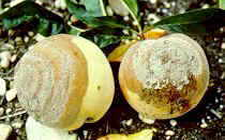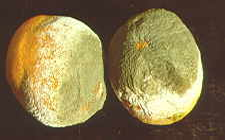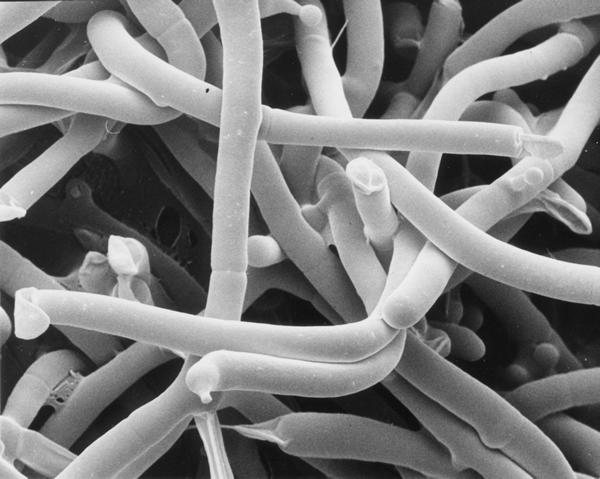Topic:David Moore's World of Fungi
Fungi help the balance of nature by nutrient recycling. Fungi decompose things. Importantly, fungi are about the only organisms that can digest wood, because the lignin which is complexed with the cellulose in wood is so difficult to degrade. Lignin digestion is a fungal speciality but they gain nutrition from living or dead animals as well as plants, and the breakdown of other complex molecules such as cellulose and tannins in soils is due mostly to fungal enzymatic activity.
 |
 |
| Mouldy apples | Mouldy oranges |
| Images from The Fifth Kingdom by Bryce Kendrick, Mycologue Publications | |
Fungi are all around us, and there are enormous numbers and quantities of them. It’s been estimated that fungi make up 90% of the total living BIOMASS in forest soils. For grassland soils, another estimate puts the total length of hyphae at over 1 kilometre per gram weight!
 |
| Scanning electron micrograph of hyphae of Pleurotus. Photograph by Dr Carmen Sanchez. |
There is such a large amount of fungal mycelium in most soils that it makes a major contribution to FOOD WEBS by being eaten by numerous vertebrates and invertebrates including insects, mites, molluscs and nematodes. Microarthropods are responsible for shredding organic matter in soil (and so prepare it for the final mineralization processes carried out by microbes), but about 80% of the tens of thousands of microarthropod species in forest soils are fungivores – they depend on the fungal mycelium for food.
When the mycelium makes fruit bodies (like mushrooms, brackets and truffles), these are also vital food sources for many animals, from mammals (including humans) to molluscs, as the following sequence of a slugfest shows …
Go to websiteDiagnosis – research resources
-
Title
Type
